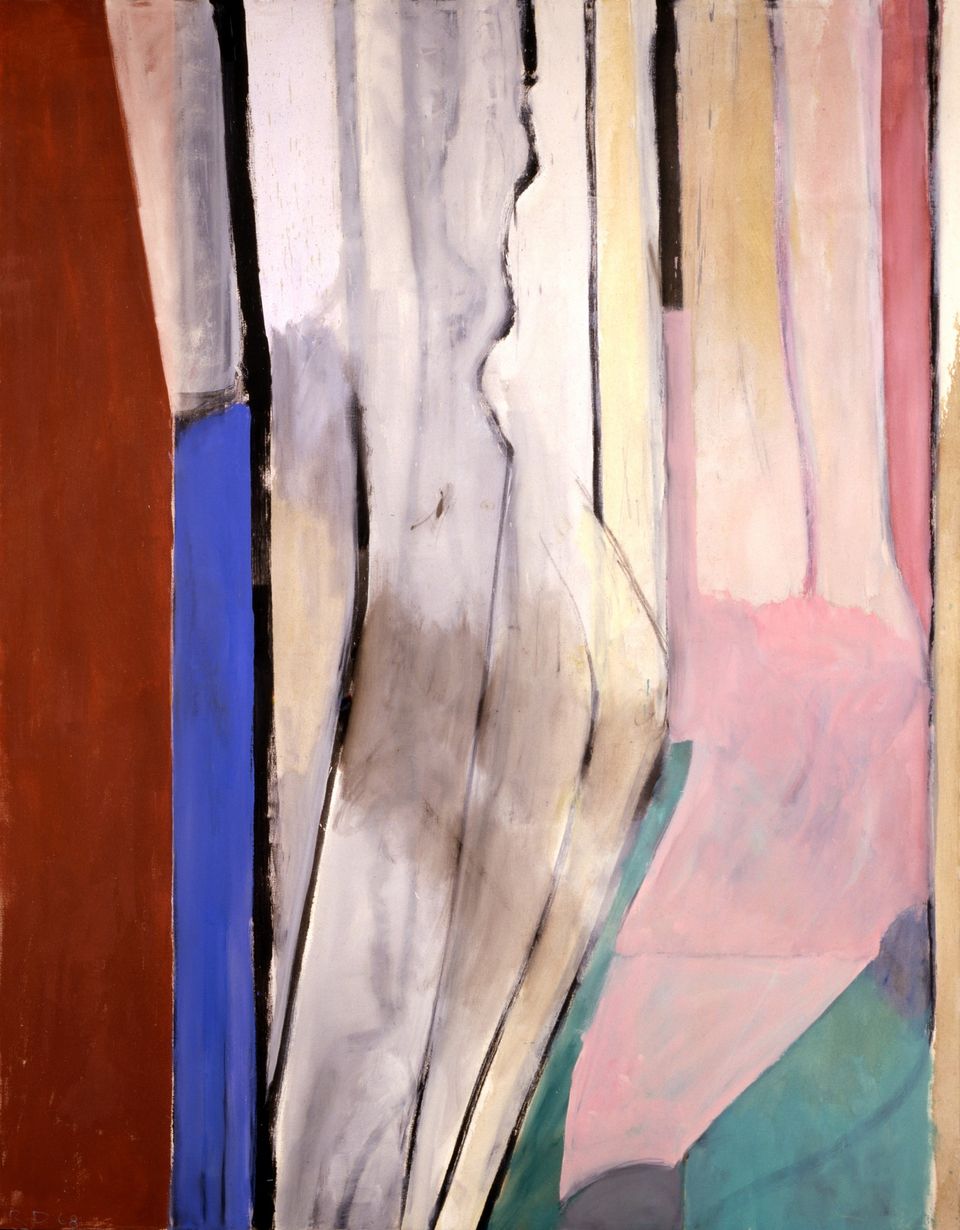Anne Truitt
- Also known as
- Anne Dean Truitt
- Born
- Baltimore, Maryland, United States
- Died
- Washington, District of Columbia, United States
- Biography
“What is important to me is not geometrical shape per se, or color per se, but to make a relationship between shape and color which feels to me like my experience. To make what feels to me like reality.”
–– Anne Truitt, 1965
Anne Truitt was an artist and writer known for her abstract sculptures that merged shape and color to express personal experiences and memories.
Truitt was raised on Maryland’s Eastern Shore, and she graduated from Bryn Mawr College in 1943 with a BA in psychology. Declining an opportunity to earn a psychology doctorate at Yale University, Truitt worked at Massachusetts General Hospital as a researcher in the psychiatric laboratory and as a nurse’s aide. During this period, she also wrote poems and short stories.
In 1947, she married James Truitt in Washington, DC, and increasingly shifted her attention to visual art. Truitt studied sculpture at Washington’s Institute of Contemporary Art in 1948–49, establishing relationships within a local community that would remain significant to her. Amid frequent relocations from Washington to cities across the United States due to her husband’s career in the 1950s, Truitt maintained a primarily sculptural practice. A key turning point came in 1961 following what she framed as a revelatory encounter with Ad Reinhardt’s and Barnett Newman’s paintings at the Guggenheim Museum. As Truitt later recalled, the experience prompted her to consider: “What was it that meant the very most to me inside my very own self?” Answering that question catalyzed her creation of upright, painted wooden sculptures evocative of the “fields and trees and fences and boards and lattices” of her childhood.
While mainly settled in Washington and raising three children in the 1960s, Truitt experimented with combining human-scaled, increasingly abstract forms with carefully applied layers of paint. She made wooden wall-like works and columns such as Keep (1962, SAAM) and 17th Summer (1974, SAAM), and while in Japan from 1964 to 1967 produced angular aluminum sculptures. “I slowly came to realize,” Truitt wrote, “that what I was actually trying to do was to take paintings off the wall, to set color free in three-dimensions for its own sake.”
Truitt worked with the pared-down, geometric forms favored by many of her contemporaries, and her work was featured in pivotal exhibitions of minimal art such as Primary Structures (1966, Jewish Museum). Yet, unlike her peers who consciously echoed industrial mass-produced forms, she understood her sculptures as repositories of memory—as resulting from, in her words, “a more or less conscious concentration on a particular area of emotionally charged personal experience.” Truitt continued this sculptural approach throughout her career and pursued equally spare but charged paintings and drawings.
Having periodically taught since the 1950s, Truitt embarked on a roughly twenty-year tenure at the University of Maryland in 1975. Starting in 1982, Truitt published her personal journals as books that chronicle her artistic evolution and its enduring connection to the contours of her life. Truitt remarked that in writing, “I began to see how my life had made itself as I was living it, how naturally and inevitably I had become an artist.”
Authored by Katherine Markoski, American Women’s History Initiative Writer and Editor, 2024
- Artist Biography
Anne Truitt was a psychology major at Bryn Mawr College, received her BA degree in 1943 and subsequently worked as a psychologist in Boston. After moving to Washington, DC, in 1948, she studied at the Institute of Contemporary Art for two years, and by 1950 was committed to being a full-time artist. In 1963 she had her first solo exhibition in New York of the reductive painted wood sculptures that have defined her aesthetic vision.
A teacher for many years at the University of Maryland, Truitt has also published three volumes of her journals that eloquently document her life in art. In a 1974 entry from Daybook, she wrote: "As I worked along, making the sculptures as they appeared in the mind's eye, I slowly came to realize that what I was actually trying to do was to take paintings off the wall, to set color free in three dimensions for its own sake."
National Museum of American Art (CD-ROM) (New York and Washington D.C.: MacMillan Digital in cooperation with the National Museum of American Art, 1996)















